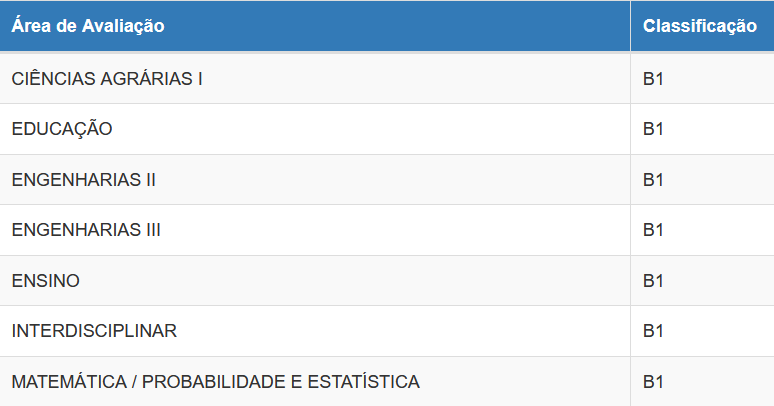A model for competition between the golden mussel and its genetically modified version
DOI:
https://doi.org/10.35819/remat2024v10iespecialid7077Keywords:
mathematical modeling, competition model, population dynamics, stability analysis, biomathematicsAbstract
The presence of the invasive golden mussel in Brazilian waters brings ecological or economic consequences. An alternative and promising populational control is the immersion of a genetically modified species with the aim of, upon contact with wild mollusks, producing infertile generations. A proposed mathematical model that encompasses such competition becomes important, as it can provide information to guide future experiments. However, the competition model requires a well-established growth dynamics. This work presents two models for the dynamics of wild mussels, studied analytically. The study exposes equilibrium solutions, their local stability at stationary points, and a sensitivity analysis of the basic reproduction numbers (R_0's). Through these results, the most suitable model for incorporating competition components is defined. Numerical simulations are performed to gauge possible competition outcomes, using the fourth-order Runge-Kutta method. The study is able to present two important conclusive points: that eradication can be achieved through planned competition and that there is a need for competitive advantages for the strategy to work. This study highlights the need for competitive advantages for the modified mussel. Among the possible advantages, the study indicates reproductive efficiency and the mortality rate of the modified mussel as the most promising ones. Given such an important topic, this work is necessary for this population control strategy to be studied and tested to assist in the development of the modified species in a way that respects ecology.
Downloads
References
BARBOSA, Charles H. X. B.; DIAS, Claudia M.; PASTORE, Dayse H.; SILVA, José C. R.; COSTA, Anna R. C.; SANTOS, Isaac P.; AZEVEDO, Ramoni Z. S.; FIGUEIRA, Raquel M. A.; FORTUNATO, Humberto F. M. Analysis of a mathematical model for golden mussels infestation. Ecological Modelling. v. 486, p. 110502, 2023. DOI: https://doi.org/10.1016/j.ecolmodel.2023.110502.
BARBOSA, Charles H. X. B. Um estudo hipotético baseado em modelos de crescimento e competição para a dinâmica populacional do mexilhão dourado. Orientadora: Claudia Mazza Dias. Coorientadora: Dayse Haime Pastore. 2022. 133 f. Dissertação (Mestrado em Modelagem Matemática e Computacional) - Universidade Federal Rural do Rio de Janeiro, Seropédica, 2022. Disponível em: https://rima.ufrrj.br/jspui/handle/20.500.14407/14351. Acesso em: 27 jun. 2024.
BOLTOVSKOY, Demetrio; CORREA, Nancy M.; CATALDO, Daniel; SYLVESTER, Francisco. Dispersion and Ecological Impact of the Invasive Freshwater Bivalve Limnoperna fortunei in the Río de la Plata Watershed and Beyond. Biological Invasions. v. 8, p. 947-963, 2006. DOI: https://doi.org/10.1007/s10530-005-5107-z.
BOLTOVSKOY, Demetrio; CORREA, Nancy M.; SYLVESTER, Francisco; CATALDO, Daniel. Nutrient recycling, phytoplankton grazing, and associated impacts of limnoperna fortunei. In: BOLTOVSKOY, Demetrio (ed.). Limnoperna Fortunei: The Ecology, Distribution and Control of a Swiftly Spreading Invasive Fouling Mussel. [S. l.]: Springer, 2015. p. 153-176.
BURDEN, R. L.; FAIRES, J. D. Numerical Analysis. Boston: Cengage Learning, 2011.
BURT, Austin. Site-specific selfish genes as tools for the control and genetic engineering of natural populations. Proceedings of the Royal Society of London. Biological Sciences. v. 270, n. 1518, p. 921-928, 2003. DOI: https://doi.org/10.1098%2Frspb.2002.2319.
CATALDO, Daniel; BOLTOVSKOY, Demetrio; HERMOSA, Jose L.; CANZI, Carla. Temperature-Dependent Rates Of Larval Development In Limnoperna Fortunei (Bivalvia: Mytilidae). Journal of Molluscan Studies. v. 71, n. 1, p. 41-46, 2005. DOI: https://doi.org/10.1093/mollus/eyi005.
EDELSYEIN-KESHET, Leah. Mathematical Models in Biology. [S. l.]: SIAM, 2005.
HAMMOND, Andrew; GALIZI, Roberto; KYROU, Kyros; SIMONI, Alekos; SINISCALCHI, Carla; KATSANOS, Dimitris; GRIBBLE, Matthew; BAKER, Dean; MAROIS, Eric; RUSSELL, Steven; BURT, Austin; WINDBICHLER, Nikolai; CRISANTI, Andrea; NOLAN, Tony. A crispr-cas9 gene drive system targeting female reproduction in the malaria mosquito vector anopheles gambiae. Nature Biotechnology. v. 34, n. 1, p. 78-83, 2016. DOI: https://doi.org/10.1038/nbt.3439.
HASTINGS, I. M. Selfish DNA as a method of pest control. Philosophical Transactions of the Royal Society of London. Biological Sciences. v. 344, n. 1309, p. 313-324, 1994. DOI: https://doi.org/10.1098/rstb.1994.0069.
KARATAYEV, A. Y.; BURLAKOVA, L. E.; PADILLA, D. K. The Effects of Dreissena Polymorpha (Pallas) Invasion on Aquatic Communities in Eastern Europe. Journal of Shellfish Research. v. 16, n. 1, p. 187-203, 1997.
MURRAY, J. D. Mathematical Biology I: An Introduction. New York: Springer, 2002.
NDII, M. Z.; HICKSON, R. I.; MERCER, G. N. Modelling the Introduction of Wolbachia into Aedes Aegypti Mosquitoes to Reduce Dengue Transmission. The ANZIAM Journal. v. 53, n. 3, p. 213-227, 2012. DOI: https://doi.org/10.1017/S1446181112000132.
PAOLUCCI, E. M.; THUESEN, E. V.; CATALDO, D. H.; BOLTOVSKOY, D. Veligers of an introduced bivalve, Limnoperna fortunei, are a new food resource that enhances growth of larval fish in the Paraná River (South America). Freshwater Biology. v. 55, n. 9, p. 1831-1844, 2010. Disponível em: https://bibliotecadigital.exactas.uba.ar/collection/paper/document/paper_00465070_v55_n9_p1831_Paolucci. Acesso em: 30 jun. 2024.
RICCIARDI, Anthony. Global range expansion of the Asian mussel Limnoperna fortunei (Mytilidae): Another fouling threat to freshwater systems. Biofouling. v. 13, n. 2, p. 97-106, 1998. DOI: https://doi.org/10.1080/08927019809378374.
SCHRAIBER, Joshua G.; KACZMARCZYK, Angela N.; KWOK, Ricky; PARK, Miran; SILVERSTEIN, Rachel; RUTAGANIRA, Florentine U.; AGGARWAL, Taruna; SCHWEMMER, Michael A.; HOM, Carole L.; GROSBERG, Richard K.; SCHREIBER, Sebastian J. Constraints on the use of lifespan-shortening Wolbachia to control dengue fever. Journal of Theoretical Biology. v. 297, p. 26-32, 2012. DOI: https://doi.org/10.1016/j.jtbi.2011.12.006.
SILVA, F. A.; BARBOSA, N. P. U.; PAULA, R. S.; CARVALHO, V. A.; CORRÊA, A.; CARVALHO, M. D. de; CARDOSO, A. V. Mexilhão-dourado no Brasil: detecção de um perigoso invasor. Ciência Hoje. v. 338, n. 57, p. 38-42, 2016. Disponível em: https://cienciahoje.periodicos.capes.gov.br/storage/acervo/ch/ch_338.pdf. Acesso em: 30 jun. 2024.
SILVA, José Carlos Rubianes; DIAS, Claudia Mazza; PASTORE, Dayse Haime; COSTA, Anna Regina Corbo; FIGUEIRA, Raquel Medeiros Andrade; FORTUNATO, Humberto Freitas de Medeiros; BARBOSA, Charles Henrique Xavier Barreto; CARVALHO, Breylla Campos. Population growth of the golden mussel (L. fortunei) in hydroelectric power plants: a study via mathematical and computational modeling. Revista Brasileira de Recursos Hídricos. v. 27, n. e3, 2022. DOI: https://doi.org/10.1590/2318-0331.272220210124.
SIMEÃO, Cláudia Marques Gonçalves; RESENDE, Márcio Figueiredo de; MARTINEZ, Carlos Barreira. Variação das Características Hidráulicas em Condutos Forçados Operando sob Condições de Infestação por Limnoperna fortunei. Revista Brasileira de Recursos Hídricos. v. 16, n. 2, p. 13-24, 2011. Disponível em: https://www.abrhidro.org.br/SGCv3/publicacao.php?PUB=1&ID=3&SUMARIO=40&ST=variacao_das_caracteristicas_hidraulicas_em_condutos_forcados_operando_sob_condicoes_de_infestacao_por_limnoperna_fortunei. Acesso em: 30 jun. 2024.
SOUZA, Rosa Cristina Corrêa Luz de; CALAZANS, Sálvio Henrique; SILVA, Edson Pereira. Impacto das espécies invasoras no ambiente aquático. Ciência e Cultura. v. 61, n. 1, p. 35-41, 2009. Disponível em: http://cienciaecultura.bvs.br/scielo.php?script=sci_arttext&pid=S0009-67252009000100014&lng=en&nrm=iso. Acesso em: 30 jun. 2024.
VANDERPLOEG, Henry A.; LIEBIG, James R.; GLUCK, Amy A. Evaluation of different phytoplankton for supporting development of zebra mussel larvae (dreissena polymorpha): the importance of size and polyunsaturated fatty acid content. Journal of Great Lakes Research. v. 22, n. 1, p. 36-45, 1996. Disponível em: https://www.reabic.net/publ/Gluck_et%20al_1996.pdf. Acesso em: 30 jun. 2024.
ZHANG, Xianghong; TANG, Sanyi; CHEKE, Robert A. Models to assess how best to replace dengue virus vectors with Wolbachia-infected mosquito populations. Mathematical Biosciences. v. 269, p. 164-177, 2015. DOI: https://doi.org/10.1016/j.mbs.2015.09.004.
Downloads
Published
How to Cite
Issue
Section
License
Copyright (c) 2024 REMAT: Revista Eletrônica da Matemática

This work is licensed under a Creative Commons Attribution 4.0 International License.
REMAT retains the copyright of published articles, having the right to first publication of the work, mention of first publication in the journal in other published media and distribution of parts or of the work as a whole in order to promote the magazine.
This is an open access journal, which means that all content is available free of charge, at no cost to the user or his institution. Users are permitted to read, download, copy, distribute, print, search or link the full texts of the articles, or use them for any other legal purpose, without requesting prior permission from the magazine or the author. This statement is in accordance with the BOAI definition of open access.
































